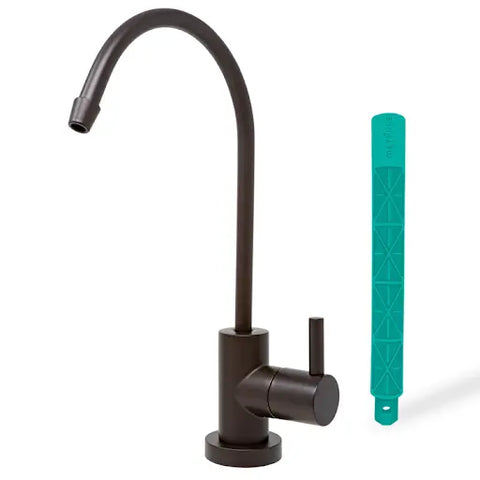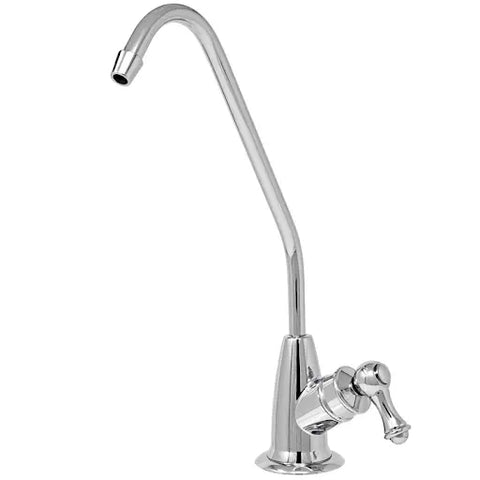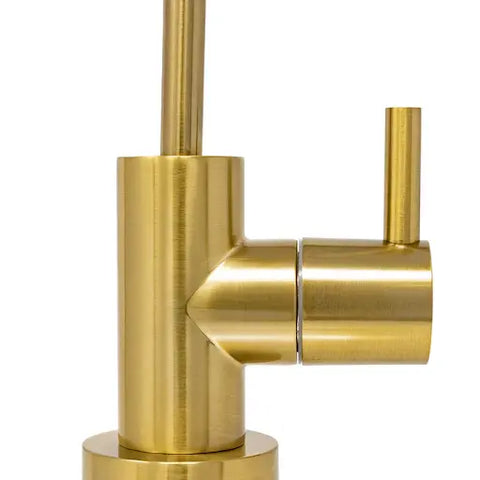Different Types of Faucets & Their Features
Introduction
We all know without faucets none of our houses would be complete. A faucet serves a vital role in your household – it enables you to regulate the flow of water in areas such as the kitchen, bathroom, or laundry room, or anywhere you need to control the water output.
But did you know that while the faucets across various areas of your home might share a similar appearance, their internal mechanisms are very different?
Still, why should you know how a certain faucet works? Basically, understanding the inner workings of a faucet is beneficial for you when you have to select a replacement or address repair issues.
In this article, we’ll explore the different types of faucets and essential factors to consider when choosing a faucet, whether you're renovating, repairing, or seeking an upgrade.
Types of Faucets
Now, there are many types of faucets, but mainly there are 4 you need to know about. Below you’ll find different features of each faucet and where in your house they are most suitable.
1. Ball Faucet
Ball faucets are commonly found in kitchen sinks and were among the earliest washerless faucet designs. They feature a single handle that moves over a rounded ball-shaped cap near the base of the spout. Inside the faucet body, there's a special plastic or metal ball controlled by this handle. The ball contains chambers or slots, along with rubber O-rings and spring-loaded rubber seals. By adjusting the position of the ball, the faucet regulates both the flow and temperature of the water.
While the exterior of a ball faucet is durable like other types, its internal components may require more maintenance. Due to its multiple parts, ball faucets are prone to leaking more than alternatives like cartridges or disc faucets.
However, being an older technology, ball faucets are often more budget-friendly compared to newer options.
2. Disk (Disc) Faucet
Ceramic disc faucets represent the latest advancement in faucet technology. They feature a single lever atop a broad cylindrical body. Inside, hot and cold water mix within a pressure balance cartridge. Two ceramic discs at the base of the chamber adjust to regulate water flow, while the temperature is controlled by moving the handle from side to side.
These faucets are known for their high quality, reliability, and infrequent need for repairs. However, due to their newer technology and durability, they typically come at a higher price point compared to other faucet types. Operating these faucets requires minimal effort, as they are highly sensitive to touch. This sensitivity makes them particularly suitable for individuals with arthritis or limited hand grip strength.

3. Cartridge Faucet
Double-handle cartridge faucets closely resemble compression washer faucets, but their operation sets them apart. While compression faucets require you to tighten the washer to stop water flow, cartridge faucets offer a smooth, consistent action. A simple half-turn of the handle transitions from off to on, and turning it off doesn't need extra pressure like with compression faucets. These are mostly found in kitchens and bathrooms.
The best part about these is that cartridges in these faucets are known for their durability and easy replacement, potentially requiring less maintenance. However, depending on your sink's manufacturer and model, replacing cartridges could be very costly.
4. Compression Washer Faucet
Compression washer faucets have been a staple since indoor plumbing began. They're commonly found in older homes and are still used in utility sinks in newer homes. While they're usually the most budget-friendly option, they may not last as long as other types, often requiring maintenance due to leaks. However, replacement parts are typically inexpensive.
You can recognize compression washer faucets by their separate hot and cold water handles. To stop the water flow, you need to tighten these handles down. They operate using a compression stem, essentially a specialized screw with a washer pressing against a valve seat.
Choosing The Best Faucet
While faucets are designed to last for years, there are many factors like worn coatings, hard water, and limescale buildup can cause them to fail prematurely. There are clear signs indicating you might need a new faucet, such as rust on the tap, a dull or flaking finish, leaky handles, or persistent leaks even after attempted repairs.
You can swap out an entire faucet for a different type, but you can't replace the assembly within a faucet. For instance, if you have an older cartridge assembly faucet, you can switch it for a single-handle model with a ceramic disc assembly.
Consider your sink's setup when replacing faucets. If you're moving from a two-handle faucet to a single-handle one, ensure the new faucet's baseplate adequately covers any extra holes. However, if you have only one hole, stick with a single-handle faucet.

Factors to Consider When Choosing Faucets
There a few factors that need to be considered when choosing between faucet types. These will help you choose the perfect faucet depending on your ease, affordability, and maintenance.

Conclusion
When it comes to choosing a faucet type, several factors should guide your decision-making process. Consider your level of handiness, accessibility needs, budget, durability expectations, and the existing setup of your home. By weighing these factors carefully, you can select the faucet type that best suits your preferences and requirements, ensuring both functionality and satisfaction for years to come.









